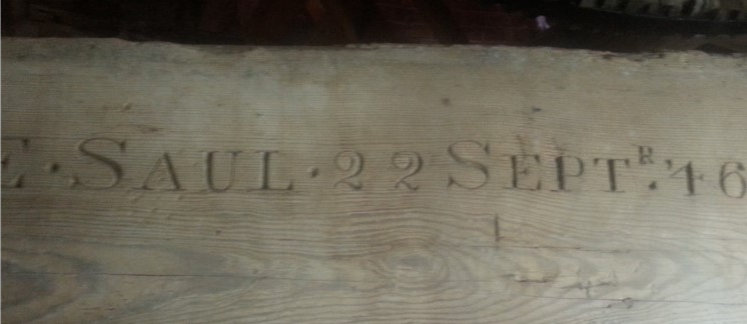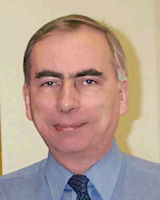 By John Slaughter
By John Slaughter
In my last report I mentioned a Saul family at Appleby, Lincolnshire and that I was in the process of obtaining a copy of a Settlement Examination for a John Saul, dated 4 January 1817, that I hoped would help to identify John’s origins. This copy has now duly arrived and whilst it does not contain ‘the silver bullet’, it is interesting in it’s own right. The examination certificate records that John Saul :-
Saith, that his legal settlement is either at Cottingham or at Cherry Burton in the East Riding of York or at Appleby in the County of Lincoln. That about 22 years ago he was bound an apprentice to Lawrence Paynter of Cottingham and that he served him under the said Indenture about four years when his master died. About one month after his master’s death he was turned over, with the consent of his father and mother to Benjamin Everingham of Cherry Burton with the Indenture, but without any endorsement on the back of it, and he served him for about two and a half years. About 17 years ago he married at Appleby in the County of Lincoln and has since resided there in a cottage and a yard containing half an acre or upwards, about three acres of meadow and two cowgates for all of which he has never paid any more or greater rent than seven pounds per annum, and that he has not gained any Settlement elsewhere since, to the Best of his Knowledge and Belief.
Quite what the Overseers at Appleby made of all this in determining John’s ‘Place of Settlement’ is anyone’s guess. John Saul had married Susannah Miller (a widow) at Appleby on 21 January 1800 and had eight children baptised there between 1800 and 1813. On the baptism of his son Thomas in 1813 the father’s occupation is given as shoemaker, so perhaps this is the trade he was apprenticed to. However on the 1841 census at Appleby his occupation is given as farmer. As I understand the workings of the Poor Law, serving an apprenticeship was one of the triggers that changed a person’s Place of Settlement. Here we have the curious situation where an apprenticeship was apparently fully served but with two different masters. Presumably the location of the second master takes precedence in these circumstances or maybe he had done something subsequently to alter his Place of Settlement to Appleby, so that the question becomes academic. Perhaps Appleby Poor Law records may reveal more.
What is frustrating from my point of view is that the intervention of the apprenticeship meant that they did not need to ask, or at least record, the place of birth, so I am none the wiser at to John Saul’s origins.
I have been continuing to review the GRO birth indexes and have now reached the year of 1870. There are 1501 Saul/Saull/Sawle entries in the GRO birth indexes for the years 1837 to 1870 and of these I have now managed to chart 1301, a percentage of 86.7%. There are still a couple more charts that I need to prepare so this % will rise further.
I came across another interesting Saul during this exercise. On the 1851 census a Thomas Saul (aged 52 years and born Leicester) was resident at 10 Queen Street, St James, Westminster employed as a coachman to the Earl of Aberdeen. On the 1861 census Thomas is at the same address but is now an unemployed coachman. The reason for this becomes clear when researching the life of the Earl Of Aberdeen. He was the British Prime Minister between December 1852 and January 1855 so he took the country into the Crimean War and this is what ultimately led to his downfall. Dissatisfaction with the course of the War, not the least of which was with the so called ‘Charge of the Light Brigade’ in October 1854, led to Parliament passing a motion in January 1855 to appoint a select committee to enquire into the conduct of the War. This motion was passed by 305 votes to 148. The Earl of Aberdeen took this as being a vote of no confidence and duly resigned. He also effectively withdrew from active politics. He died on 14 December 1860.
One wonders, as a coachman, what tales Thomas might have overheard about these dramatic national events.
I received a very interesting enquiry concerning the windmill at East Dereham in Norfolk. On a beam on the second floor, an inscription has been carved, “E. Saul 22 September ‘46”. The enquirer wondered if we had any information about the individual named.
I replied as follows:
It is a bit of a mystery as to the identity of E Saul. It seems likely to have been Edmund Saul who married Mary Secker at East Dereham on 30 December 1816. The marriage entry states that Edmund was a bachelor of the parish of Scarning. They had a son named Edmund who was born on 24 January 1818 and baptised at East Dereham on 11 February 1818. He however died at the age of 7 years and was buried at East Dereham on 23 May 1824. I can find no record that they had any further children nor do I know what became of the father Edmund, I have not found him in any other records. On the 1841 census his wife Mary is recorded in a household in East Dereham but there are no other Sauls resident. It doesn’t state what her status was as this information was not required on that year’s census. On the 1851 census Mary’s status is given as a widow and she is described as an aunt in a household of Seckers.
There is no Edmund Saul in the GRO death indexes that could be him. It did cross my mind as to whether the inscription could be a memorial, the date being his date of death but as I say there is no evidence for this. I suppose it is more likely to be the name of the carpenter and the date that the work was done.

The inscription on the beam at the windmill at East Dereham in Norfolk

 By John Slaughter
By John Slaughter